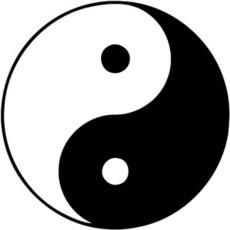Dreaming
Nightmare
Nightmares are unpleasant dreams that can be disturbing but not a significant pr
Posted June 9, 2014

We frequently talk about an experience being a “nightmare,” meaning that it was frightening, dreadful or terrible, and this is nothing new. For example, as we near the 100th anniversary of the start of WWI (Archduke Franz Ferdinand was assassinated on June 28th, 1914), we read 100 year old descriptions of the “nightmarish” fighting that took place in trenches. I am sure that many of the soldiers that went ashore during D-Day 70 years ago also described their experiences as being a nightmare. And the list could go on and on with “nightmare” or “nightmarish” being used to describe all manner of barely tolerable situations, both personal and societal.
This time-honored term is easy to understand as almost certainly we have all had a nightmare at one time or another and experienced the fear and sense of loss of control involved. But what is a nightmare, exactly? Nightmares are dreams with dysphoric content that usually result in a sudden awakening. Dreams, of course, typically occur during rapid eye movement (REM) sleep. Laboratory research has shown that it is during the physiological state of REM sleep that the imagery and complex development associated with dreaming occurs. Dream mentation in non-rapid eye movement (NREM) sleep, on the other hand, tends to be more like thinking or reviewing memories. Research indicates, however, that as the night progresses, NREM sleep mentation comes to more closely resemble that of REM sleep.
REM is the stage of sleep during which dreams tend to be vivid and have an apparent story line. In the case of nightmares, the story line is one of serious threat to physical integrity, security or survival and is associated with dysphoric mood. Nightmares can be extremely realistic or may involve fantasy aspects or events that are impossible in consensus reality. Common nightmare scenarios range from being chased by armed enemies intent on serious bodily harm, to being held prisoner by a Wicked Witch of the West, to being experimented on by space aliens or being grabbed at by zombies while running through a graveyard at twilight. Hallmarks of a nightmare are its intense negative, often fearful, emotion, and that the nightmare is easily recalled immediately upon awakening. The memory of the nightmare may fade quickly with time or may be recalled years later.
Interestingly, research on dreaming indicates that most standard dreams are not “sweet” but often involve negative emotional states. In research during which laboratory volunteers were awakened after entry into REM sleep, unpleasant emotional states were twice as likely as pleasant ones (see Zadra, & Domhoff). Nightmares usually involve a greater level of arousal with some acceleration of the heart rate but this physical response may be relatively muted compared to the intensity of the material experienced in the dream. This helps distinguish nightmares from sleep terrors. With sleep terrors there is an awakening from NREM sleep with intense physiological arousal including rapid heart rate, rapid breathing and sweating. And unlike REM Sleep Behavior Disorder, there typically is little or no bodily movement associated with the dream content.
REM sleep is strongly controlled by the circadian rhythm and occurs for the longest period of time during the second portion of the night. The early morning hours are the most likely times for dreams and nightmares. Waking from a nightmare in the early morning is a frightening and unpleasant experience. It is characteristic of nightmares that alertness and full orientation return rapidly. Fortunately, there is often a great deal of relief that follows the recognition that the terrible events just imagined were only a dream. It is often, but not always, relatively easy to fall back asleep after a nightmare.
I have previously discussed the experiences that can occur when the dream state merges with waking awareness and a state of continued paralysis from being in REM. This especially frightening experience has been, at times, referred to as the “incubus attack”. It is different from the standard nightmare in that the hallucinatory experiences of the dream continue even as the person is unable to move and becomes conscious. There may be a blending of dream elements with the background objects of the bedroom. These experiences often include an unsettling sense of a presence in the room that may be almost impossible to shake. The nightmare is, on the other hand, quickly recognized as being unreal. We are usually unable to move during REM in order to prevent acting out of dreams, a potentially dangerous behavior that occurs in REM sleep behavior disorder.
Generally, nightmares are unpleasant but do no lasting harm. They are present in up to 75% of children and can start very early in life, as young as 2.5 years of age. Nightmares typically start somewhere between the ages of 6 and 9 years and diminish in frequency over time. Anyone of any age, including young, middle-aged, and elderly adults, however, can experience disturbing nightmares. They are more common in people who are anxious and can be an aspect of posttraumatic stress disorder (PTSD). In 80% of patients with PTSD, nightmares are present. They are also more frequent in people with inadequate amounts of sleep, perhaps due to the interruption of REM sleep. It is estimated that for the general population, about 2% to 8% have problematic nightmares.
Nightmares that are frequent and intense can lead to avoidance of sleep and sleep deprivation. This unfortunately, increases the probability of further nightmares due to sleep loss and disruption. A nightmare disorder is diagnosed when there are repeated occurrences of nightmares that cause significant distress or impairment in social, occupational or other important arenas of functioning. These impairments may include fatigue, impaired memory, low mood, anxiety, avoidance of sleep and decreased social functioning.
Usually nightmares respond to reassurance and the recognition that the dream wasn’t real. When a full nightmare disorder develops, however, more effective treatment interventions are required. I will discuss these in the next post.
American Academy of Sleep Medicine. (2014) International classification of sleep disorders, 3rd ed. Darien, IL: American Academy of Sleep Medicine.
Zadra, A. & Domhoff, G.W. (2011). Dream content: Quantitative findings, in Kryger, M.H., Roth, T., & Dement, W.C. (Eds.) (2011). Principles and Practice of Sleep Medicine, 5th ed. St. Louis, MO: Elsevier Saunders.





